Posecopsahe was the chief of Ruptáre, the “Second Village” of Mandans at the Knife River Villages. The captains designated him “Black Cat Grand Chief of the Mandans.” The latter name was derived from the Mandan púskapsi probably meaning in this context, black panther or mountain lion.[1]Clay S. Jenkinson, A Vast and Open Plain: The Writings of the Lewis and Clark Expedition in North Dakota, 1804–1806 (Bismarck, North Dakota: State Historical Society of North Dakota, 2003), 68n103.
In response to the captains’ requests for a Mandan-Arikara peace agreement, exclusive trade with St. Louis, and a Mandan delegation to visit Washington City, Posecopsahe initially gave favorable responses. Throughout the long winter, however, he would have to tell the captains that he could not fulfill their wishes. On 18 November 1804, Black Cat brought news that they would continue trading with the English companies to the north. In April 1805, he withdrew from the Washington City delegation and any Arikara alliance citing interference from the Lakota Sioux.
Despite the bad news brought by Posecopsahe during the winter at Fort Mandan, Lewis’s opinion of him was high:
[8 February 1805]
this man possesses more integrety, firmness, inteligence and perspicuety of mind than any indian I have met with in this quarter, and I think with a little management he may be made a usefull agent in furthering the views of our government.
Selected Encounters
October 28, 1804
Council postponed
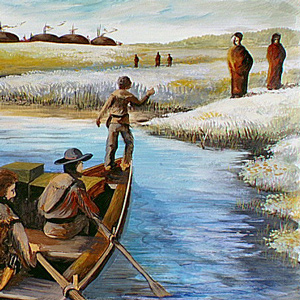

Ruptáre, second Mandan village, ND The Indian council planned for today is postponed due to high winds. Nearby Indians visit none-the-less, and Posecopsahe (Black Cat), Clark, and Lewis look for a place to build winter quarters.
October 31, 1804
Black Cat speaks
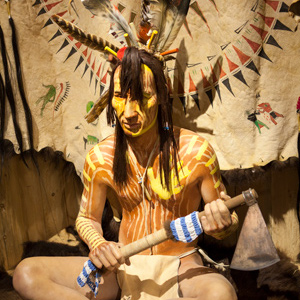

Ruptáre, second Mandan village, ND Posecopsahe (Black Cat) gives a speech wishing for peace and returns two of the French traders’ stolen beaver traps. Lewis writes a letter to the North West Company bourgeois at Fort Assiniboine.
November 18, 1804
The Mandan-Assiniboine trade alliance


Fort Mandan, ND Black Cat’s wife brings corn carried on her back, and he tells the captains how their promises sound much like the unfulfilled promises previously given by Spanish trader John Evans.
November 22, 1804
Domestic violence
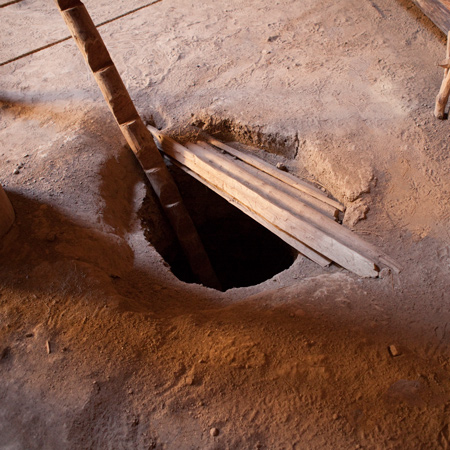

Fort Mandan, ND At the interpreter’s camp just outside of Fort Mandan proper, an Indian threatens to kill his wife for having slept with Sgt. Ordway. On the Ouachita River, expedition leader George Hunter has a near-fatal accident.
November 28, 1804
Black Cat's medals
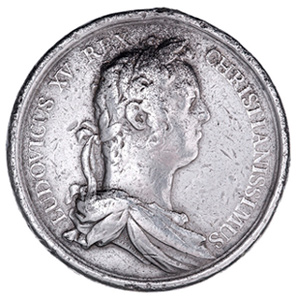

Fort Mandan, ND Chief Posecopsahe (Black Cat) visits Fort Mandan to see the American “Curiossities.” He is told to no longer accept Indian peace medals or flags from Spain or England.
December 4, 1804
Jusseaume's discontent
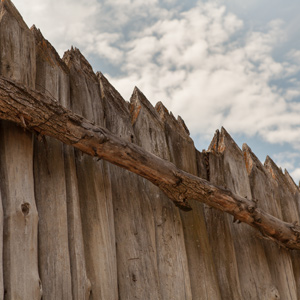

Fort Mandan, ND Pickets are installed and Clark reports that the fort’s main bastion is completed. Posecopsahe (Black Cat) and two chiefs visit, and Clark reports that interpreter René Jusseaume is assuming and discontented.
December 11, 1804
Sun dogs
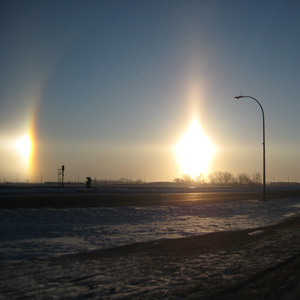

Fort Mandan, ND Secondary rings appear around the sun when light hits ice crystals suspended in the air. Due to the cold, Clark orders all the hunters to return to the fort.
January 2, 1805
A frolic at Ruptáre
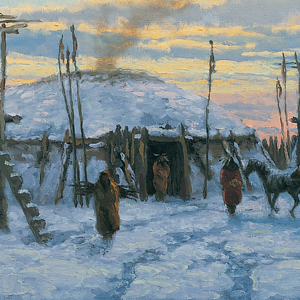

Fort Mandan, ND Lewis takes a large group to Black Cat’s village, Ruptáre, and New Year’s celebrations continue. At the fort, several Indians bring corn to pay the blacksmiths.
January 11, 1805
A war medicine dance
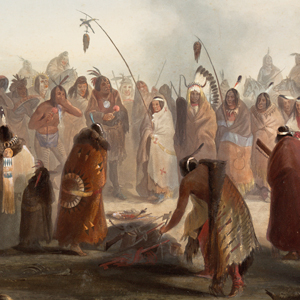

Fort Mandan, ND Chiefs Posecopsahe (Black Cat) and The Coal visit the fort and spend the night. At Mitutanka village, several soldiers witness a war medicine dance.
February 8, 1805
Wovles and Ravens
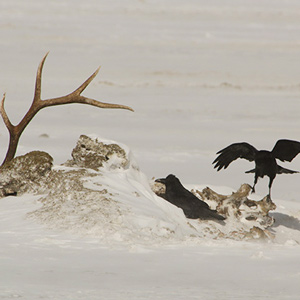

At Fort Mandan, Lewis entertains Posecopsahe (Black Cat) and his wife. Away from the Knife River Villages, Clark has a pen built to keep the wolves and ravens away from the harvest of the hunt.
February 13, 1805
Clark catches up
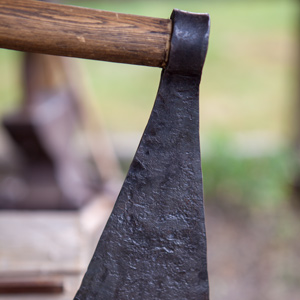

Fort Mandan, ND Having returned to the fort after dark the previous night, Clark records the events of his nine-day long hunting trip. Posecopsahe (Black Cat) is given a war axe.
March 3, 1805
All hands employed
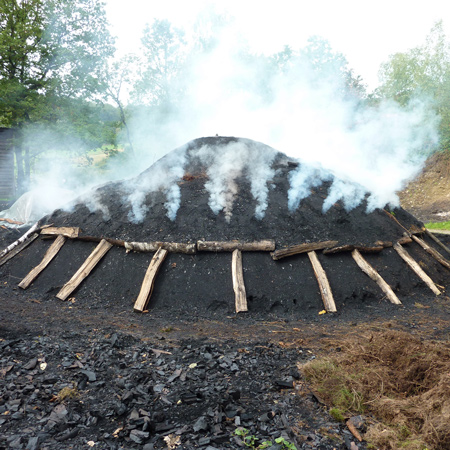

Fort Mandan, ND Some make charcoal for the blacksmith forge, others braid tow-line rope for the boats, and away from the fort, a detachment carves dugout canoes from large cottonwood logs.
April 8, 1805
A swamped canoe
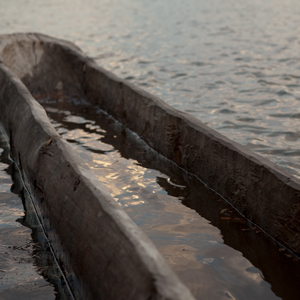

After leaving the Knife River Villages, one of the dugout canoes fills with water wetting a wooden keg of gunpowder. Below present Garrison Dam in North Dakota, headwinds force them to stop for the day.
August 14, 1806
Among old friends
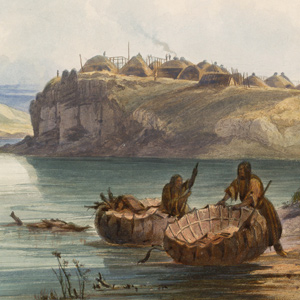

Knife River Villages, ND Early in the day, the expedition greets their old friends at the complex of Hidatsa and Mandan villages at the Knife River. They meet with various chiefs, and Clark invites them to travel with the expedition to Washington City.
Notes
| ↑1 | Clay S. Jenkinson, A Vast and Open Plain: The Writings of the Lewis and Clark Expedition in North Dakota, 1804–1806 (Bismarck, North Dakota: State Historical Society of North Dakota, 2003), 68n103. |
|---|
